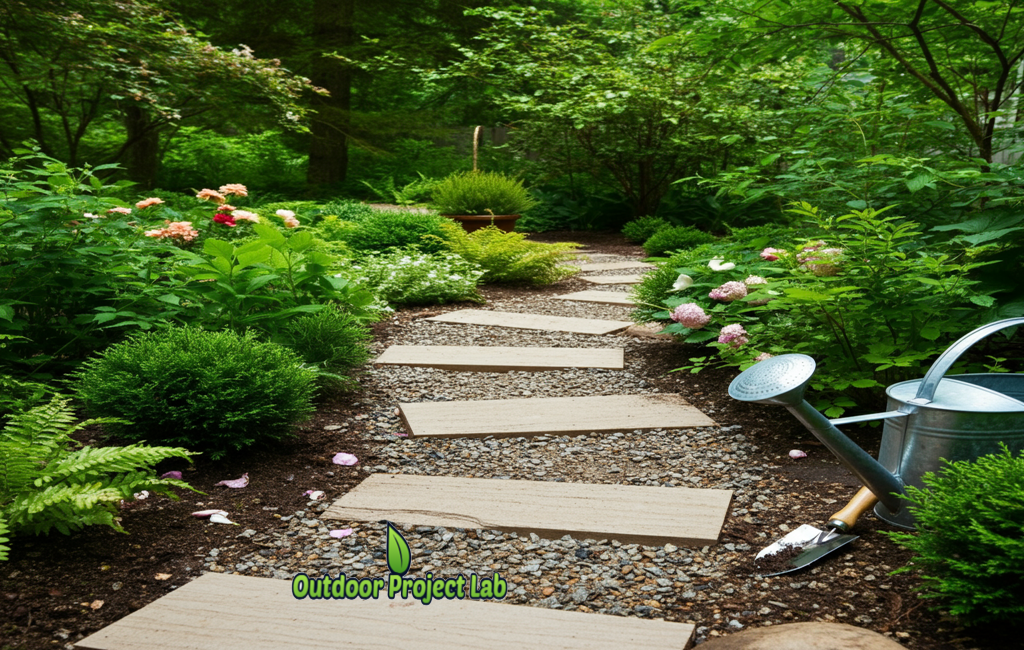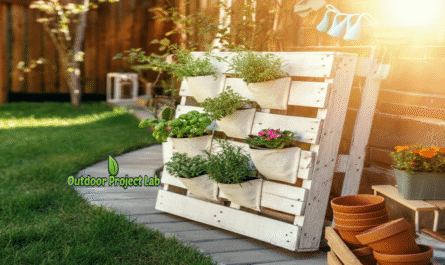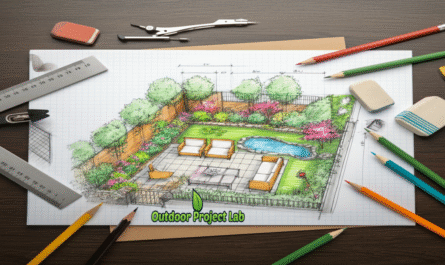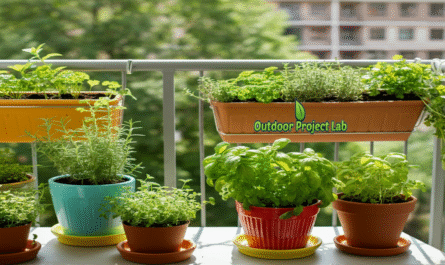Creating a garden path in your backyard is a fun way to make your outdoor space look neat and beautiful. You don’t need to spend a lot of money or hire a pro! With simple tools and ideas, you can make a path that looks great and helps you walk around your garden easily. Let’s learn how to do it step by step and explore some cheap walkway ideas to get you started.
Why Add a Garden Path to Your Backyard?
A garden path is more than just a place to walk. It’s a key part of your backyard landscaping ideas that offers several great benefits.
- Adds Beauty: A well-designed path makes your garden look organized and charming. It can turn a simple yard into a stunning landscape.
- Improves Safety: Paths provide a stable, clear surface to walk on. This reduces the risk of tripping over roots or slipping on wet grass, especially for kids and older adults.
- Provides Easy Access: A path lets you easily get to your plants for watering, weeding, and harvesting without trampling on delicate flowers or vegetables.
- Guides Foot Traffic: It naturally shows people where to walk, protecting your lawn and garden beds from being worn down.
Best DIY Garden Path Materials
Choosing the right material is the first step in your outdoor DIY projects. Your choice will affect the look, cost, and effort needed. Here are some popular garden path materials to consider.
|
Material |
Cost |
Easy to Install |
Eco-Friendly |
Looks Great |
|---|---|---|---|---|
|
Gravel |
Low |
Yes |
Yes |
✔✔✔ |
|
Stepping Stones |
Medium |
Yes |
Depends |
✔✔✔✔ |
|
Wood Mulch |
Low |
Yes |
Yes |
✔✔ |
|
Brick Pavers |
High |
No |
No |
✔✔✔✔✔ |
Pros and Cons of Path Materials
- Gravel/Pebble and Stone Paths: These are affordable and simple to install. They create a satisfying crunch underfoot and drain water well. However, gravel can scatter, so you may need to add edging to keep it in place.
- Stepping Stones: Stones offer a classic, natural look. You can place them directly on the grass or set them in sand or mulch. They are durable but can be heavy to move.
- Wood Mulch: This is one of the most eco-friendly garden projects. Mulch is inexpensive, soft to walk on, and helps suppress weeds. The main downside is that it breaks down over time and needs to be topped up every few years.
- Brick Pavers: Bricks provide a formal and timeless look. They are very durable and come in many colors and styles. However, they are more expensive and require more work to install correctly, often needing a level sand base.
Step-by-Step Guide to Build a Simple DIY Garden Path
Ready to learn how to build a path in your garden? This simple guide works for most materials, like gravel or stepping stones.
1. Choose Your Path’s Shape
First, decide where your path will go. Will it be a straight line from your patio to the vegetable patch? Or a curving path that winds through your flower beds? Use a garden hose or rope to lay out the shape on the ground. Walk along it to make sure it feels natural and is wide enough.
2. Pick Your Materials
Based on the comparison table and your budget, select your favorite material. For your first project, gravel or stepping stones are great beginner choices.
3. Prepare the Ground
This is the most important step for a long-lasting path.
- Clear the Area: Remove any grass, weeds, and large rocks along your marked path.
- Dig the Trench: Dig down about 4 inches. Try to keep the base as level as possible.
- Add a Base Layer (Optional but Recommended): Put down a 2 inch layer of crushed stone and pack it down firmly. This helps with drainage and creates a stable foundation.
- Lay Landscape Fabric: Roll out landscape fabric over the base to prevent weeds from growing through your path.
4. Lay Your Path Material
Now for the fun part.
- For Gravel or Mulch: Pour the material directly onto the landscape fabric. Spread it evenly with a rake until it’s about 2 inches deep.
- For Stepping Stones: Place each stone where you want it, making sure they are spaced comfortably for walking. Press them firmly into the ground or a layer of sand so they don’t wobble.
5. Add Finishing Touches
To make your path look complete, you can add an edge using rocks, bricks, or flexible plastic edging. You can also plant low-growing flowers or solar lights along the sides to highlight your new path at night.
Tips to Keep Your Garden Path Looking Great
A little maintenance goes a long way. Follow these beginner gardening tips to keep your path in top shape.
- Regular Weeding: Even with landscape fabric, a few weeds might pop up. Pull them out as soon as you see them.
- Rake and Refill: If you have a gravel or mulch path, rake it occasionally to keep it smooth. Top up with new material as needed.
- Clean the Surface: Sweep stones and pavers to remove dirt and leaves. You can use simple, eco-friendly tools to help with cleanup without harming your garden. For more complex jobs, a set of reliable beginner tools is all you need.
Inspiration from Other Cultures: Japanese Garden Paths
For a path that inspires peace and calm, look to Japanese garden design. These paths often use natural elements like carefully placed stones (called tobi-ishi) and moss to create a sense of balance with nature. The goal isn’t just to get from one place to another, but to slow down and enjoy the journey. Curved paths and uneven stones encourage mindful walking. You can incorporate these ideas by using a mix of stone sizes and letting moss grow between them. To get the authentic look, you might consider using specific Japanese tools designed for precision and care.
Building your own path is a rewarding project that adds value and personality to your home. We hope this guide helps you create the backyard of your dreams. For more outdoor project guides, visit us at Outdoor Project Lab.




